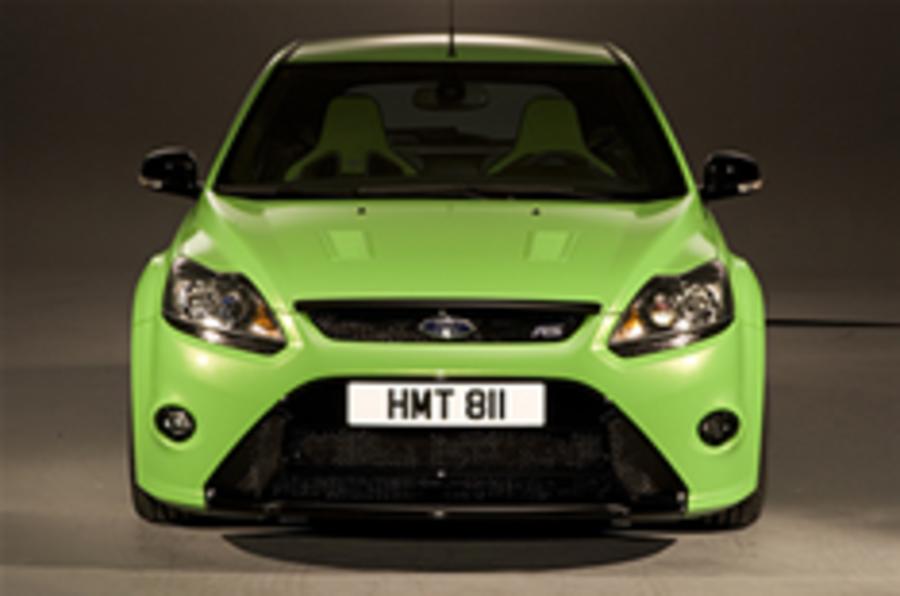Engine
The engine itself is still the Volvo-derived 2.5-litre five-cylinder turbocharged engine that powers the ST, but it gets a bigger turbocharger and intercooler. The camshafts, con rods, cylinder head, exhaust system and intake manifold have all been entirely redesigned. Boost will be higher – possibly as much as 1.4 bar – but that has yet to be confirmed for homologation purposes.
Transmission
The RS will use exactly the same six-speed Getrag manual gearbox as the regular ST but will have a meatier, short-shift gearchange. The ratios will remain unchanged but the gearing will be slightly longer overall due to the standard fit 19in wheels. As expected it’ll also get a Quaife mechanical limited slip differential, similar in design to the one fitted to the previous Focus RS, but with all components beefed up to handle the extra torque of new RS.
Suspension
The RS will share its basic chassis architecture with the ST but gains an intreguing new piece of tech within its front struts known as the revo-knuckle. In practice this absorbs twist action without affecting the operation of the strut under load and is claimed to effectively eliminate torque steer.The front and rear tracks are also wider by 40mm, giving the car a wider, lower-looking stance. Front and rear spring and damper rates have been significantly uprated over those of the ST, and at the rear the suspension geometry has been reworked to allow a bigger anti-roll bar to be fitted.
Steering
As on the ST you will be able to select between three different levels of power steering assistance weights, but the RS will get a bespoke steering rack that’s a quarter turn quicker between the locks, despite providing a slightly better turning circle than the ST. On the road we’re promised that this will make the RS feel much sharper than the ST. Ford doesn’t know the exact kerbweight of the car because it hasn’t built a production example yet, but the engineering team say it should be less than 100kg heavier than the ST – which means somewhere south of 1500kg.
Brakes
As you would expect, the RS will get bigger brake discs at each corner and larger calipers to match. The front rotors are serious 226mm diameter cross-drilled items, while the rear uses 300mm diameter ventilated discs. The ESP system will also be retuned to allow more slip at either end, and it will be entirely switchable.
Interior
The most radical difference inside will be the fitment of a pair of bewinged Recaro front seats. These not only have huge side bolsters and much more under-thigh support but also feature a new material described as being suede-composite. Other differences inside include a new boost gauge, colour coded stitching on the door inserts, a new gearlever and subtle RS badges within the fascia (the prototype car we photographed didn’t have these, but they will be on the final production version).
Exterior styling
The RS looks menacing in pictures – and even meaner in the metal. Key differences between it and the ST include a new and massively more aggressive nose, a huge front splitter that reduces lift by over a quarter compared with the ST – plus big louvres in the bonnet that pay homage to the seminal Escort RS Cosworth and provide a ram-air effect for the turbo.The side skirts are deeper while ‘gills’ on each wing incorporate sexy-looking RS badges. The 19 inch wheels also get subtle RS branding and will wear 235/35 19in Continental rubber.At the rear a new spoiler balances the lift reduction available at the front of the car, helping to ensure aerodynamic balance – it’s not just there to look good. The huge new rear valance also helps rearwards airflow and incorporates two stubby chrome exhaust tailpipes that have been styled, we’re told, to look like the induction trumpets of a Cosworth DFV Formula One engine.






Join the debate
Add your comment
Re: Under the skin of the Focus RS
"the front rotors are serious 226mm diameter cross-drilled items"
Does no-one check these things for accuracy?